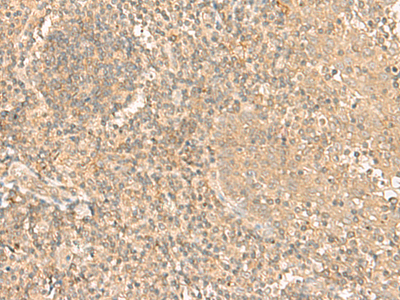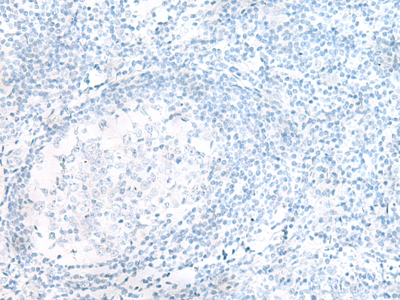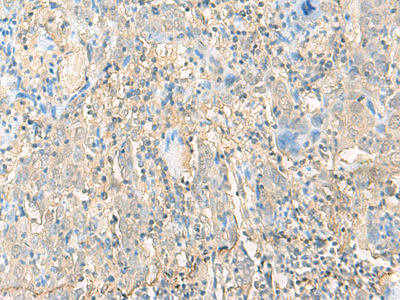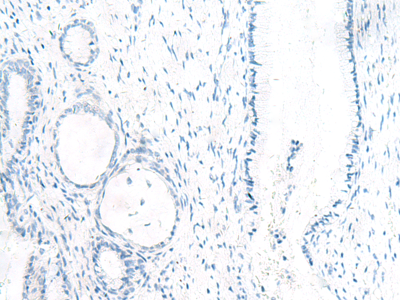| Cat.#: S215960 |
| Product Name: Anti-HLA-A/F/H Rabbit Polyclonal Antibody |
| Synonyms: HLAA; HLAF; CDA12; HLA-5.4; HLA-CDA12; HLAHP |
| UNIPROT ID: P01893 (Gene Accession – Hs.181244 ) |
| Background: HLA-A belongs to the HLA class I heavy chain paralogues. This class I molecule is a heterodimer consisting of a heavy chain and a light chain (beta-2 microglobulin). The heavy chain is anchored in the membrane. Class I molecules play a central role in the immune system by presenting peptides derived from the endoplasmic reticulum lumen. They are expressed in nearly all cells. The heavy chain is approximately 45 kDa and its gene contains 8 exons. Exon 1 encodes the leader peptide, exons 2 and 3 encode the alpha1 and alpha2 domains, which both bind the peptide, exon 4 encodes the alpha3 domain, exon 5 encodes the transmembrane region, and exons 6 and 7 encode the cytoplasmic tail. Polymorphisms within exon 2 and exon 3 are responsible for the peptide binding specificity of each class one molecule. Typing for these polymorphisms is routinely done for bone marrow and kidney transplantation. Hundreds of HLA-A alleles have been described. HLA-F belongs to the HLA class I heavy chain paralogues. It encodes a non-classical heavy chain that forms a heterodimer with a beta-2 microglobulin light chain, with the heavy chain anchored in the membrane. Unlike most other HLA heavy chains, this molecule is localized in the endoplasmic reticulum and Golgi apparatus, with a small amount present at the cell surface in some cell types. It contains a divergent peptide-binding groove, and is thought to bind a restricted subset of peptides for immune presentation. This gene exhibits few polymorphisms. Multiple transcript variants encoding different isoforms have been found for this gene. These variants lack a coding exon found in transcripts from other HLA paralogues due to an altered splice acceptor site, resulting in a shorter cytoplasmic domain. HLA-H represents a transcribed pseudogene, possibly derived from HLA-A. This gene displays extensive variation. |
| Immunogen: Synthetic peptide of human HLA-A/F/H |
| Applications: ELISA, IHC |
| Recommended Dilutions: IHC: 25-100; ELISA: 5000-10000 |
| Host Species: Rabbit |
| Clonality: Rabbit Polyclonal |
| Isotype: Immunogen-specific rabbit IgG |
| Purification: Antigen affinity purification |
| Species Reactivity: Human |
| Constituents: PBS (without Mg2+ and Ca2+), pH 7.4, 150 mM NaCl, 0.05% Sodium Azide and 40% glycerol |
| Research Areas: Immunology |
| Storage & Shipping: Store at -20°C. Avoid repeated freezing and thawing |

Immunohistochemistry analysis of paraffin embedded Human tonsil tissue using 215960(HLA-A/F/H Antibody) at a dilution of 1/20(Cell membrane). | 
In comparision with the IHC on the left, the same paraffin-embedded Human tonsil tissue is first treated with the synthetic peptide and then with 215960(Anti-HLA-A/F/H Antibody) at dilution 1/20. | 
The image on the left is immunohistochemistry of paraffin-embedded Human cervical cancer tissue using 215960(Anti-HLA-A/F/H Antibody) at a dilution of 1/20. | 
In comparision with the IHC on the left, the same paraffin-embedded Human cervical cancer tissue is first treated with synthetic peptide and then with D164192(Anti-HLA-A/F/H Antibody) at dilution 1/20. |
|














